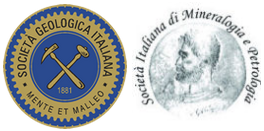
| Event Name | Plenary Lecture at the first SGI-SIMP meeting |
| Start Date | 10th Sep 2014 |
| End Date | 12th Sep 2014 |
| Duration | 3 days |
| Description | To celebrate the International Year of Crystallography, the joint Congress of the Italian Society of Mineralogy and Petrology and the Italian Geological Society (Milan, 10-12 September 2014) will feature a plenary lecture on 'One hundred years of mineral crystal chemistry' by Prof Stefano Merlino (U. Pisa).
Abstract of the lecture After the epochal experience of Friedrich and Knipping suggested and interpreted by Laue, the scene rapidly moved to England where the young Bragg correctly explained the results of the Munich discovery and showed how to use X-rays to determine the arrangement of atoms in crystals and, in few years, actually derived the structures of several inorganic compounds. Their comparison permitted Bragg to assert that crystals are composed of ‘‘inelastic spheres in contact’’ and that ‘‘it is possible to assign to the sphere representing an atom… a constant diameter.’’ The development of these concepts by various authors (Wasastjerna, Goldschmidt, …) led to the well-known Table of ionic radii by Pauling, who - at the same time - proposed the rules for the stability of ionic compounds, based on the concept of coordination polyhedra as building elementary modules of inorganic compounds. The stability rules of Pauling, as well as the conception, formulated by Bragg, of the structures of complex oxides as characterized by ‘close packing’ of oxygen anions, were the main guiding lines in the ‘trial and error’ procedures to determine the atomic arrangements in minerals and in inorganic compounds in general. The increasing number of known structures raised the need for proper classification schemes, largely based on elementary structural units (as the silicon tetrahedra in silicates) and the various ways of their connection. At the same time the wide basis of structural data and the increased precision and accuracy of those data stimulated the revision of the old compilations of ionic radii as well as a re-formulation of the Pauling’s rule of valence-bond balance. Examples are presented of the application of the crystal chemical concepts to some important mineralogical, geochemical and geophysical problems. An explosive growth of structural knowledge in the last decades of the twentieth century was stimulated by the new techniques of data collection, the high speed of computing and the advent of direct methods of structure solution, which resulted not only in an enormous increase in the number of known structures, but also in unraveling very complex arrangements. This increasing structural knowledge accompanied and stimulated the development of a new way to look at the arrangements of inorganic compounds, based on their modular aspects. The concept of assembling different, geometrically compatible modules, mainly structural layers, to build up complex structures has been very productive; in fact it not only consented a deep knowledge of the structural relationships inside wide families of natural and synthetic compounds, but also favored the solution of complex structural problems and permitted careful previsions of new possible structural arrangements. Few lines of future developments of the crystal chemical study of minerals are briefly presented and discussed: ‘synergy’ between mineralogists and material chemists; computational simulations of structural arrangements; new experimental approach through automated electron diffraction tomography. |
| Location | Milano Italy |
| Contact | Luca Bindi luca.bindi@unifi.it |
| URL | http://www.geoscienze2014.it/ |
| Category | lectures |



